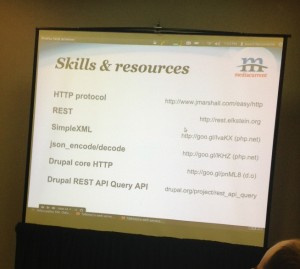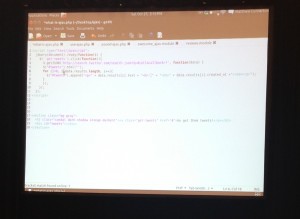Day 1 of DrupalCamp Altanta was a short day, just Friday afternoon, but there were plenty of excellent sessions on the agenda. I actually took a fair number of notes and picked up several ideas for making the Drupal sites I run, run better.
I started the afternoon with Building a Better Resource: Improving a Drupal Scholarly Journal Platform. This was a solid presentation by Dan Hansen and Jesse Karlsberg that covered a range of topics from migrating a legacy Drupal 6 site to Drupal 7 to capturing a scholarly journal workflow with the Maestro module. Of particular interest is some of the custom module work being done for the Southern Spaces site. These include a text section module that allows content creators to add section level navigation points into lengthy journal articles and juicebox inline that adds a WP-style shortcode for creating Juicebox Galleries easily. Finally work is being done to create a distribution for scholarly journals that would be useful for law reviews. Finally it’s worth noting that author’s submit articles to the journal via word processor files, not through the WYSIWYG editor.
Next up was Growth Hacking with Content, Marketing Automation & Drupal presented by Shellie Hutchens, the Director of Marketing at Mediacurrent. The focus here was on marketing automation and integrating Drupal sites with marketing platforms. The idea is to shape visitor experience on your site to engage the viewer and slowly gather information that can be used for highly targeted marketing whether it be sales, brand visibility, or higher levels of engagement. Mediacurrent supports the development of a number of marketing automation modules that tie Drupal to many popular marketing platforms.
to be continued…


